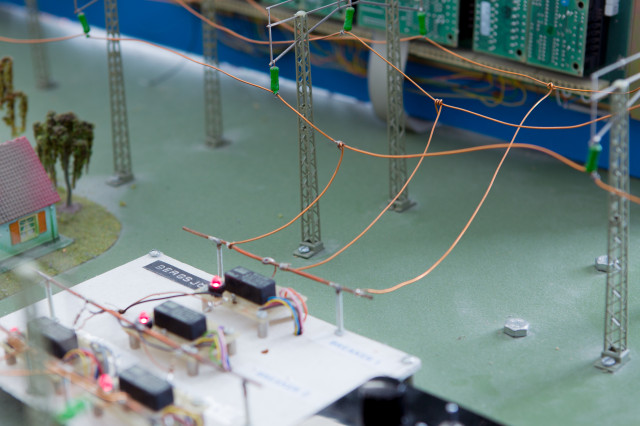• How sensors optimize ICT from a user, business and technical perspective• Personalization, dynamic Persona, logistics reduction, context measurement.• Physics of sensors. Signals, measurement techniques, noise and algorithms.• Higher level sensing, biometrics, location• Multiple sensor arrays, homogeneous and heterogeneous• Data fusion models and algorithms• Higher level fusion, aggregation• Mediated communication, sensor network topologies• Sensors and data security• Advanced applications, augmented reality and virtual spaces
II2302 Sensor-baserade system 7,5 hp
Denna kurs är under avveckling.
Sista planerade examination: VT 2025
Avvecklingsbeslut:
Kursen avvecklas vid utgången av VT 2025 enligt skolchefsbeslut: J-2023-3202.
Beslutsdatum: 2023-12-08
Kursen gavs sista gången VT 2022. Sista möjlighet till examination i kursen ges VT 2025.
Tentamen erbjuds under omtentaperioden i juni. Kontakta examinator för att bli examinerad på projektet.

Information per kursomgång
Kursomgångar saknas för aktuella eller kommande terminer.
Kursplan som PDF
Notera: all information från kursplanen visas i tillgängligt format på denna sida.
Kursplan II2302 (HT 2023–)Innehåll och lärandemål
Kursinnehåll
Lärandemål
This course is an introduction to sensor enabled systems, with an emphasis on embedded platforms. Areas covered include broad sensor technologies, the physical properties they measure, and how they are used in embedded designs. Data fusion methods and algorithms, especially for heterogeneous sensor networks and systems are discussed, and how these methods enable new applications and services, especially those in context awareness. The roles of mediated communications, connectivity and network topology choices in sensor networks are also covered. Technologies and methods discussed in the class will be tied to emerging application areas in several areas such as machine intelligence, security, entertainment, and business processes. • To know how to select sensors based on physical measurement requirements and application specifications.• To know how to deploy data fusion principles to combine sensor data to satisfy a measurement goal.• To know how security can be protected with respect to sensors and the data they generate. Also to know the limitation of security methods used with respect to robustness, computation requirements and cost.• To know how to design a network topology for communicating sensor nodes that satisfies stated requirements of robustness, security, performance and cost.• To be able to use sensor based architectures to design advanced applications that use context awareness, personalization, augmented and virtual spaces.
Kurslitteratur och förberedelser
Särskild behörighet
Kurslitteratur
Examination och slutförande
När kurs inte längre ges har student möjlighet att examineras under ytterligare två läsår.
Betygsskala
Examination
- PRO1 - Projekt, 4,5 hp, betygsskala: A, B, C, D, E, FX, F
- TEN1 - Tentamen, 3,0 hp, betygsskala: A, B, C, D, E, FX, F
Examinator beslutar, baserat på rekommendation från KTH:s handläggare av stöd till studenter med funktionsnedsättning, om eventuell anpassad examination för studenter med dokumenterad, varaktig funktionsnedsättning.
Examinator får medge annan examinationsform vid omexamination av enstaka studenter.
Passed written exam TEN1: 3 hp, Grade A-FProject PRO1: 4,5 hp, Grade A-FThe grade for the course is calculated as a weighted average where the grade E-A are given a value of 1-5. Roundhalfs up.
Examinator
Etiskt förhållningssätt
- Vid grupparbete har alla i gruppen ansvar för gruppens arbete.
- Vid examination ska varje student ärligt redovisa hjälp som erhållits och källor som använts.
- Vid muntlig examination ska varje student kunna redogöra för hela uppgiften och hela lösningen.